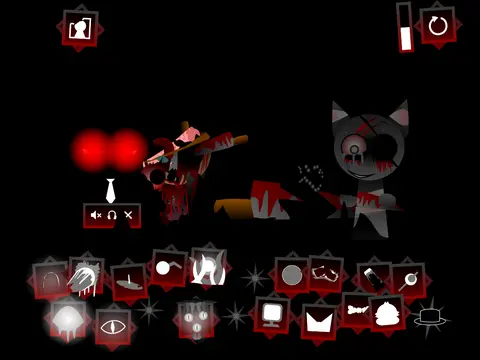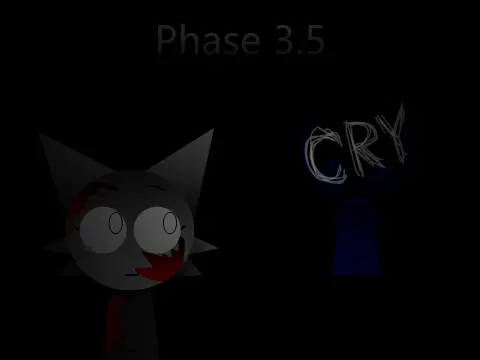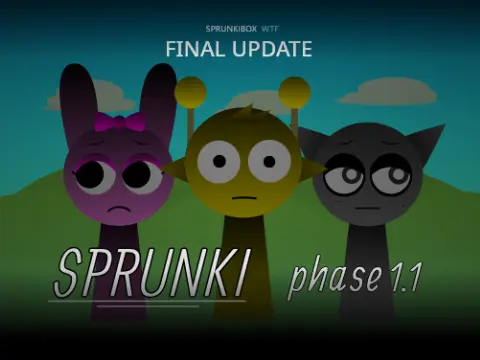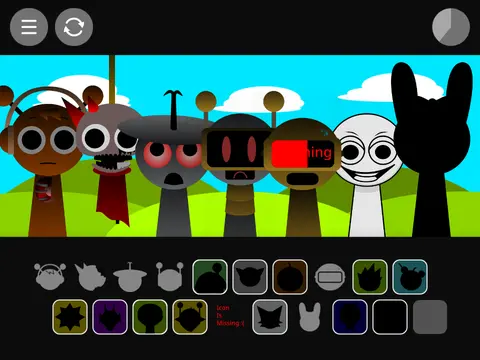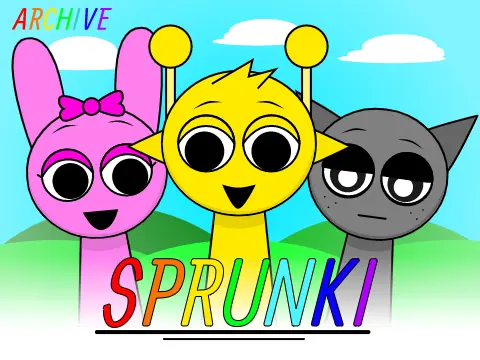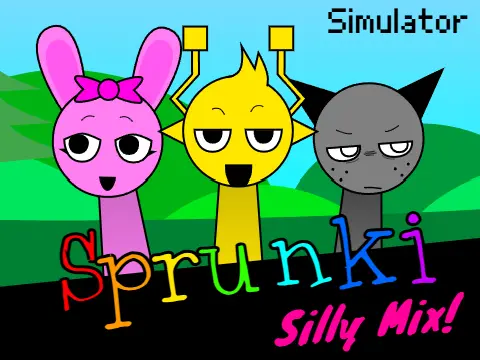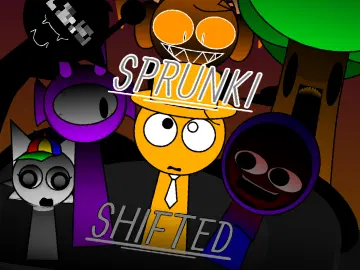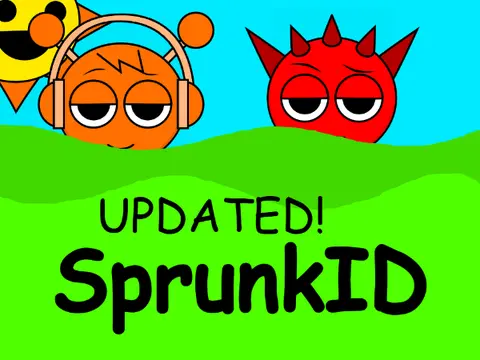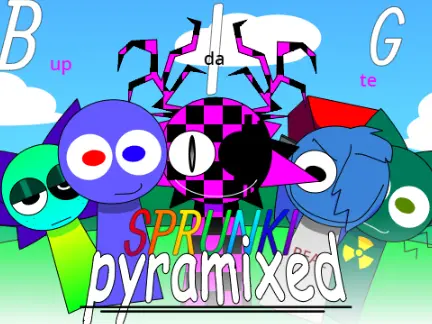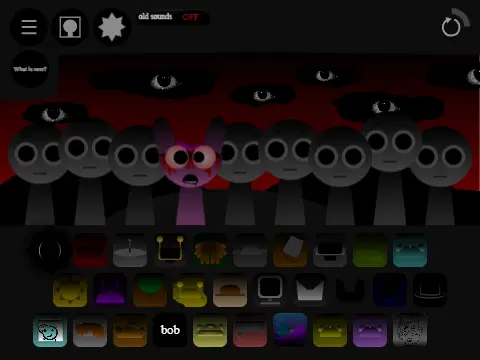incredibox sprunki dophamined
What is Incredibox Sprunki Dophamined?
Incredibox Sprunki Dophamined represents a groundbreaking approach to music game design that consciously incorporates principles of neuroscience and psychology to create an exceptionally engaging and rewarding experience. The "Dophamined" designation refers to the careful engineering of gameplay elements to stimulate dopamine release through predictable reward patterns, satisfying audio feedback, and progressive challenge structures. This modification transcends typical music game conventions by implementing scientifically-informed design principles that enhance both enjoyment and musical learning. At its foundation, the game maintains the core Incredibox mechanics of dragging characters to a stage to activate their sounds, but enhances this with sophisticated response systems that provide immediate positive reinforcement for musically successful choices. Each character is designed with particular attention to acoustic properties that humans find naturally pleasing, incorporating harmonic ratios and rhythmic patterns that align with established principles of musical cognition. The visual design incorporates dynamic elements that respond to musical success, creating a multi-sensory feedback loop that reinforces effective compositional decisions. The game implements adaptive difficulty systems that analyze player performance and adjust challenge levels to maintain optimal engagement—neither too difficult to cause frustration nor too simple to create boredom. The character selection includes specially designed "dopamine triggers" that produce particularly satisfying sounds when used in successful combinations, creating memorable peak experiences that players seek to recreate. The progression system incorporates variable ratio reinforcement schedules that psychological research has shown to maximize engagement through unpredictable rewards. The social features leverage our innate desire for recognition and status, providing meaningful acknowledgment of musical achievements within the community. The audio engineering demonstrates advanced understanding of psychoacoustics, with careful attention to frequency balance, spatial positioning, and dynamic range that creates a sonically rich environment without sensory overload. The interface design incorporates principles of cognitive flow, minimizing extraneous decisions while maximizing creative freedom within well-defined parameters. The overall experience represents a harmonious marriage of game design artistry and scientific understanding of human motivation and perception, resulting in a music creation platform that feels instinctively rewarding while developing genuine musical skills and understanding.
How does Incredibox Sprunki Dophamined work?
The operational mechanics of Incredibox Sprunki Dophamined integrate traditional music game functionality with innovative psychologically-informed systems that optimize engagement and learning. The core drag-and-drop interface remains familiar but enhances visual and auditory feedback to provide clearer indication of musical success through color gradients, particle effects, and subtle audio enhancements that activate when players make harmonically sound choices. The game incorporates a sophisticated analysis engine that evaluates compositions in real-time using musical theory principles, providing immediate feedback about harmonic coherence, rhythmic stability, and frequency balance. Each character features multiple reward tiers that unlock based on usage patterns—initial interactions produce basic sounds, but sustained effective use unlocks enhanced versions with richer textures and complexity. The adaptive difficulty system monitors player performance across multiple metrics including compositional complexity, harmonic sophistication, and rhythmic innovation, adjusting available characters and challenges to match developing skills. The game implements spaced repetition techniques for musical learning, gradually reintroducing concepts at optimal intervals to reinforce understanding without conscious effort. The reward system utilizes variable ratio scheduling where particularly satisfying sound combinations occur unpredictably, maintaining engagement through anticipation and surprise. The social integration provides comparative feedback that leverages healthy competition while emphasizing personal improvement rather than direct comparison. The audio engine incorporates binaural processing and subtle psychoacoustic effects that enhance perception of depth and space, creating a more immersive auditory experience. The character design includes "sweet spot" indicators that visually suggest optimal placement positions based on current composition context, guiding players toward musically successful choices while maintaining creative agency. The tutorial system uses progressive disclosure, introducing concepts only when players have developed prerequisite skills through experimentation. The recording functionality includes analytical tools that provide after-action reviews of compositions, highlighting particularly effective sections and suggesting improvements for less successful areas. The overall architecture is designed to create a state of psychological flow where challenge perfectly matches skill level, time perception alters, and creativity flourishes naturally without conscious effort. Regular content updates introduce new psychological engagement techniques based on ongoing research into motivation and learning, ensuring the experience continues to evolve toward optimal engagement.
How to play Incredibox Sprunki Dophamined?
Mastering Incredibox Sprunki Dophamined involves understanding both its musical systems and the psychological principles that underlie its engaging design. Beginners should trust their intuitive reactions to different sounds—the game is designed to naturally guide players toward musically satisfying choices through immediate feedback systems. The initial approach involves experimentation with different character combinations while observing the feedback indicators that signal harmonic compatibility. Effective strategy involves balancing exploration of new possibilities with exploitation of known successful patterns, creating a rhythm between novelty and familiarity that maintains engagement. The game rewards attentive listening—subtle audio cues indicate when combinations are particularly effective and worth remembering for future use. Advanced techniques involve anticipating reward patterns and structuring compositions to create satisfying progressions that leverage the game's psychological design. The challenge modes provide structured environments to develop specific skills, with difficulty levels that automatically adjust to maintain optimal challenge relative to current abilities. Community interaction enhances the experience through shared discoveries of particularly effective techniques and character combinations that produce strong positive feedback. The achievement system guides players toward comprehensive exploration of the game's possibilities while providing meaningful milestones that acknowledge skill development. Regular breaks are encouraged—the psychological design incorporates spacing effects that often lead to improved performance after periods of rest and subconscious processing. The mobile version leverages touch interface advantages for intuitive control, while the desktop experience offers additional precision for complex compositions. The most successful players develop metacognitive awareness of their creative process, recognizing patterns in their compositional choices and consciously expanding beyond comfort zones. The social features should be used constructively—studying others' compositions provides learning opportunities, while sharing your own work creates accountability and recognition that reinforces continued engagement. The recording analytics provide valuable objective feedback about compositional strengths and areas for improvement, complementing subjective listening impressions. Ultimately, optimal gameplay involves surrendering to the experience rather than overthinking decisions—the psychological systems work most effectively when players trust their instincts and embrace the pleasure of discovery and creation.
What makes Incredibox Sprunki Dophamined different?
Incredibox Sprunki Dophamined establishes its distinctive identity through its conscious application of psychological and neuroscientific principles to music game design, setting it apart from both conventional rhythm games and other Sprunki modifications. The most significant differentiation lies in its scientifically-informed approach to engagement optimization—every design decision is evaluated against research about human motivation, learning, and perception rather than relying solely on conventional game design traditions. The reward systems demonstrate sophisticated understanding of reinforcement schedules and their effects on long-term engagement, avoiding the addictive pitfalls of gambling-like mechanics while maintaining compelling motivation structures. The audio design incorporates psychoacoustic research about which sound qualities humans find naturally pleasing, creating an auditory experience that feels instinctively satisfying without requiring musical training to appreciate. The learning progression implements principles from cognitive science about skill acquisition and knowledge retention, creating a musical education experience that feels like entertainment while developing genuine competency. The social features leverage understood psychological drivers like status, recognition, and belonging, but implement them in ways that promote healthy community interaction rather than toxic competition. The business model reflects ethical considerations about player well-being, avoiding exploitative monetization practices while providing meaningful value that justifies optional support. The development process incorporates ongoing user research and psychological testing, creating an evidence-based approach to game improvement rather than relying solely on designer intuition or community feedback. The accessibility features demonstrate unusual thoughtfulness, incorporating options that accommodate different perceptual abilities and learning styles without compromising the core experience. The documentation provides unusual transparency about the psychological principles underlying design decisions, educating players about why they find certain experiences engaging while promoting mindful engagement. The overall philosophy prioritizes long-term player well-being and skill development over short-term engagement metrics, creating an experience that remains rewarding through extended play rather than burning out quickly. These collective differences create a music game that not only entertains but contributes positively to players' musical abilities and understanding of their own creative processes, representing a significant advancement in how rhythm games can balance engagement, education, and ethical design.
How do I create a soundtrack in Incredibox Sprunki Dophamined?
Creating compelling soundtracks in Incredibox Sprunki Dophamined involves leveraging both musical understanding and awareness of the game's psychological design principles. Begin by establishing clear intentionality for your composition—whether aiming for particular emotional qualities, structural complexity, or exploration of specific sound combinations. The initial phase should involve free experimentation while attentively observing the feedback systems that indicate musically successful choices. The layering process should balance immediate satisfaction with developmental progression—perhaps beginning with known effective combinations to establish positive engagement before venturing into less familiar territory. Utilize the game's analytical tools to understand why certain combinations work well, translating intuitive successes into conscious understanding that can be applied more broadly. The structural development should incorporate principles of tension and release that align with natural psychological response patterns, creating compositions that feel instinctively satisfying through their architectural progression. The recording features should be used strategically—capturing promising ideas early, then refining them through iterative improvement while maintaining the spontaneous qualities that made them initially engaging. Study community compositions not just for their musical qualities but for what they reveal about effective engagement with the game's systems, identifying patterns that consistently produce satisfying results. The challenge modes provide valuable constraints that encourage creative problem-solving while developing specific skills that transfer to open composition. The social sharing should be approached as part of the creative process rather than merely as presentation of finished work—feedback from other players often reveals qualities in your compositions that you might not perceive yourself. The iterative nature of composition means you should embrace experimentation and occasional failure as necessary components of skill development, trusting that the game's systems will guide you toward improvement through clear feedback. The most successful creators develop personal rituals around their creative process—perhaps specific approaches to initial exploration, refinement techniques, or methods for evaluating completed works. Ultimately, soundtrack creation should balance structured technique with spontaneous playfulness, leveraging the game's psychological design to maintain engagement through the inevitable challenges of creative work while developing musical skills and understanding that extend beyond the game environment.

